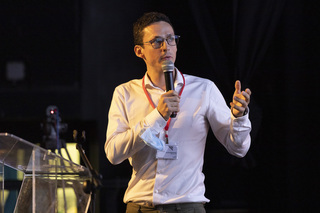Intravenous hospital preparations for treatment of Covid19: an inter-laboratory comparison of cisatracurium quantification
6 October 2021
Philip Chennell1, Chloé Marchand2, Yvan Grange3, Mouloud Yessaad4, Violaine Delannoy5, Camille Merienne2, Ian Soulairol6.1 Université Clermont Auvergne, CHU Clermont Ferrand, Clermont Auvergne INP, CNRS, ICCF, F-63000 Clermont-Ferrand, France.
2 Hospices Civils de Lyon - Unité de Préparation et de Contrôle des Médicaments, plateforme FRIPHARM, Pharmacie à usage intérieur, Groupement Hospitalier Edouard Herriot
3 French National Agency for Medicines and Health Products Safety, ANSM, Laboratory Controls Division, 34740 Vendargues, France
4 CHU Clermont-Ferrand, Pôle Pharmacie, 63000 Clermont-Ferrand, France.
5 CHU Nîmes, Service Pharmacie, 30900 Nîmes
6 ICGM, Université Montpellier, CNRS, ENSCM, 34000 Montpellier, France

Introduction and objectives
The 2020-2021 SARS-Cov2 global epidemic has and is still creating major disruptions in the supply of many drugs, including neuromuscular blocking agents like cisatracurium. The French State purchased several active pharmaceutical ingredients, including cisatracurium, in order to allow hospital-compounding units to produce pharmaceutical preparations of these drugs for the needs of their patients. The objective of this work was to set-up and perform an inter-laboratory comparison of cisatracurium quantification in intravenous hospital preparations.
Materials and methods
Four centres in France participated in the study (3 teaching hospitals and the French national medicines control laboratory). Centre 1 produced the initial cisatracurium solutions at 3 concentrations (low, medium and high, respectively 4.25; 4.86 and 5.92 mg/mL). All four centres performed the analyses in quintuplicate on the samples of the three concentrations, and were ignorant of the target theoretical concentrations. The samples were sent to the different centres by refrigerated transport and were stored at 5°C until analysis. The quantification method used was locally adapted by each centre from a previously published liquid chromatography with UV-Vis detection method [1] or from the Ph. Eur. monograph. Statistical analysis was performed by using the Coefficient of Variation Ratio (CVR) and the Standard Deviation Index (SDI). Accuracy of each laboratory was assessed using the “Z-score” calculation [2].
Results
All quantification results for each centre were within the expected specifications. Mean group variation coefficients were of 3.33%; 4.01% and 3.55% for respectively the low, medium and high concentrations). All the CVR were included between 0.05 and 0.61, while all the SDI were comprised between -1.59 and 1.18. Accuracy bias was acceptable as no Z-score was out of the theoretical concentration ± 2 standard deviation range.
Discussion – Conclusion
The results show that each centre could correctly quantify cisatracurium for the tested pharmaceutical preparation of 5 mg/mL cisatracurium. This shows that each center can serve as a backup quality control centre, thus ensuring that if need be these critical preparations could still be adequately checked, whatever the circumstances (technical problem at one of the centres for example). The next step of this work is to repeat the study for atracurium.
[1] : Pignard et al. Stabilité physico-chimique des solutions injectables de bésilate de cisatracurium dans les conditions cliniques d’utilisation. Ann Fr Anesth Reanim. 2014 May;33(5):304-9
[2] SH GTA 06 Guide Technique d’accreditation : contrôle de qualite en biologie medicale. https://tools.cofrac.fr/documentation/SH-GTA-06 consulted the 11.12.2020.